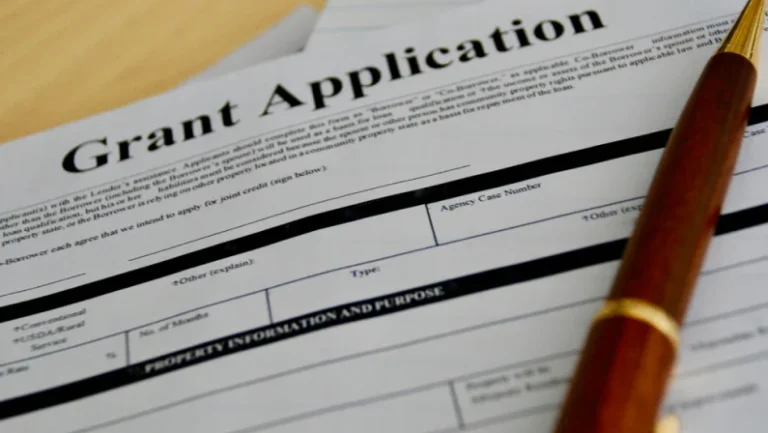Bureaucracy can either support business operations or slow them to a crawl. While structure and oversight are necessary in any growing organization, too much red tape can delay decision-making, frustrate teams, and stall progress.
Navigating the bureaucracy in business takes a strategic mindset. Are you dealing with internal systems, regulatory requirements, or corporate processes? The key is knowing how to adapt while keeping your goals in motion. In this guide, we’ll cover how businesses can reduce friction, streamline operations, and grow faster by handling bureaucracy more effectively.
What Is Bureaucracy in the Business Context?
Bureaucracy in an organization refers to a formal system of rules, procedures, and hierarchy designed to manage operations. In a business setting, bureaucracy exists to create order and consistency. However, as companies expand, these systems often become more rigid and difficult to navigate.
This creates a bureaucratic workplace where even routine decisions require multiple approvals, and innovation is slowed by excessive documentation and oversight.
How Does Bureaucracy Impact Business Growth?

Bureaucracy and business growth don’t always go hand in hand. Excessive structure can make companies less agile. When teams are slowed by internal approvals or unclear procedures, opportunities may be missed and customers may experience delays.
In some cases, bureaucracy in business management is necessary to maintain quality and compliance. But when these systems become too complex, they can increase costs, reduce morale, and limit a company’s ability to respond quickly to market changes.
4 Key Characteristics of a Bureaucracy
Bureaucracy isn’t inherently negative. It has defining features that, when managed properly, can actually support business operations.
Below are four core traits that define bureaucratic entities in the workplace.
1. A Clear Hierarchy
A chain of command helps define responsibility and reporting relationships. While the structure is important, excessive layers of approval can slow down decision-making and prevent frontline teams from taking the initiative.
2. Specialization
Roles in a bureaucracy at work are highly defined. Employees are assigned specific tasks based on their skill sets. This can increase efficiency but may also reduce flexibility or cross-functional collaboration.
3. A Division of Labor
Tasks are broken down into smaller, manageable parts. In a bureaucracy in a company, this structure promotes consistency but can sometimes limit innovation if individuals aren’t empowered to go beyond their defined duties.
4. A Set of Formal Rules
Written policies and procedures are central to any bureaucratic process. While rules provide clarity and compliance, they can also become outdated or overly complex if not regularly reviewed.
What Bureaucratic Challenges Do Growing Businesses Commonly Face?
As businesses scale, they often encounter bureaucratic challenges such as:
- Slow internal approvals for new initiatives
- Excessive documentation and reporting requirements
- Siloed departments that limit collaboration
- Difficulty adapting procedures to fit real-time changes
- Delays caused by conflicting regulations in different markets
Over time, these issues can hinder progress, limit creativity, and increase employee frustration.
How Can Businesses Streamline Internal Bureaucracy?
To reduce the impact of corporate bureaucracy, companies should evaluate which processes are essential and which create unnecessary delays.
Here’s how:
- Simplify workflows by reducing approval layers
- Empower managers and teams with more decision-making authority
- Audit internal procedures regularly to eliminate redundancy
- Use clear documentation to replace verbal or informal rules
- Encourage feedback to identify bottlenecks from the ground up
These steps can help minimize unnecessary friction and increase speed without sacrificing quality or compliance.
What Role Does Technology Play in Navigating Bureaucratic Hurdles?

Technology is one of the most effective tools for simplifying bureaucracy in business. With the right platforms, companies can digitize paperwork, automate workflows, and track approvals in real time.
CRM systems, document management software, and automation tools can significantly reduce the burden of manual tasks. They also create visibility and accountability across departments, making it easier to manage internal procedures and external compliance.
How Can Businesses Effectively Manage Governmental Bureaucracy?
In addition to internal systems, businesses must often navigate bureaucracy in business management at the governmental level. From licensing and permits to compliance reporting, these requirements can be complex and time-consuming.
To manage this effectively:
- Build relationships with regulatory agencies
- Stay informed about industry-specific compliance updates
- Appoint a team member or hire a consultant to handle documentation and filings
- Use legal and policy tools to track requirements across jurisdictions
Working with a business development consultant can also ease this process by providing insight into relevant regulations and best practices for compliance.
What Strategies Help Entrepreneurs Navigate Bureaucratic Systems in Emerging Markets?
Operating in emerging markets often means facing more fragmented or evolving bureaucratic entities. Entrepreneurs should approach these systems with patience and preparation.
It helps to:
- Partner with local advisors who understand the business environment
- Learn the decision-making structure of relevant government bodies
- Build in extra time for approvals and permits
- Document everything for transparency and accountability
These strategies help minimize delays and improve relationships with both public and private partners.
How Can Organizational Culture Reduce Bureaucratic Slowdowns?

Culture has a major impact on how bureaucracy is experienced inside a company. A rigid, top-down culture may reinforce silos and slow approvals. On the other hand, a culture that values transparency, communication, and collaboration can ease the effects of bureaucracy at work.
Businesses can reduce red tape by encouraging:
- Open feedback channels between departments
- Cross-functional collaboration and problem-solving
- Leadership that prioritizes progress over protocol when appropriate
By creating a culture that balances structure with flexibility, organizations can reduce internal slowdowns without losing control.
What Are the Benefits of Appointing a Compliance or Regulatory Officer?
For companies that deal with complex regulations, appointing a compliance or regulatory officer can streamline the bureaucratic process. This role serves as a central point of contact for ensuring procedures align with both internal policies and external laws.
Having a dedicated officer improves:
- Timeliness and accuracy of compliance filings
- Communication with regulatory agencies
- Training on new rules or policy changes
- Risk management and internal controls
How Can Navigating Bureaucracy Become a Competitive Advantage?
While many businesses view bureaucracy as a hurdle, those who learn to navigate it efficiently can gain a competitive edge. Organizations that manage regulatory compliance well, respond quickly to internal needs, and eliminate unnecessary slowdowns are positioned to move faster and smarter.
Being organized and quick to act shows customers, partners, and regulators that your business is reliable and professional. It also reduces costly delays and keeps teams focused on delivering value.
Moving Beyond Red Tape to Real Growth
Managing bureaucracy in a company is not about eliminating structure—it’s about finding balance. Businesses that understand how to streamline internal procedures, use technology wisely, and maintain flexibility within formal systems are better equipped for sustained growth.
LSI helps organizations reduce friction and improve operations with smart, data-informed strategies. As a trusted business development consultant, LSI supports companies in simplifying workflows, improving compliance, and building scalable systems. Learn more about who we are to take the next step toward sustainable growth without unnecessary red tape.
Ready to make bureaucracy work for your business? Let’s start the conversation.





